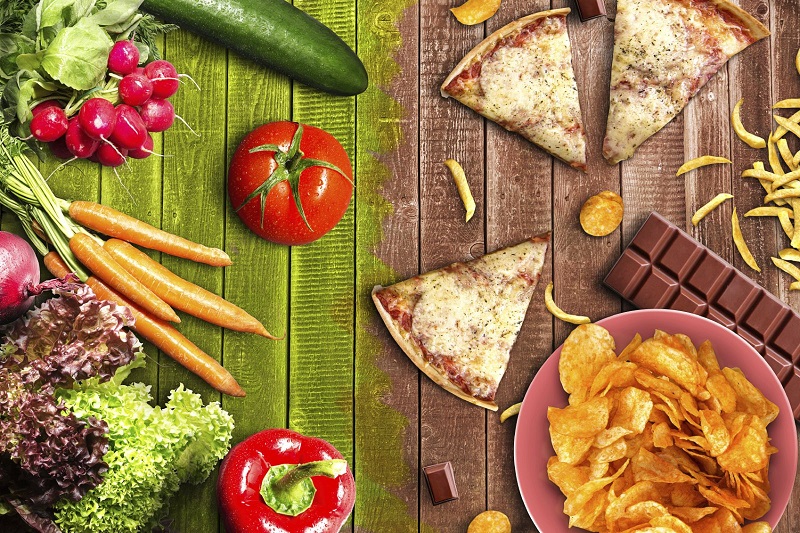Working Out Plenty — But What Are They Eating?

What is football food?
For those watching the game, it’s frequently chili and chips, burgers and hot dogs. In Cleveland’s Municipal Lot prior to a Browns game, most tailgaters aren’t munching on salad.
For those playing the game, it’s a little more complicated. At times, football puts a premium on size and weight, especially in the trenches, and yet, the food that will empower and recharge players is different than the Thanksgiving Lite meal that frequently accompanies football games at home.
“I really try to show them how the food and beverages they put in their body can take their performance to a higher level,” said Amy Jamieson-Petonic, an outpatient clinical dietitian at University Hospitals who frequently works with student-athletes.
Jamieson-Petonic pointed to offensive and defensive linemen, in particular. Added pounds, she said, can be an asset in the trenches, but if those pounds are added the wrong way, they can put those linemen at risk for cancer, diabetes and heart disease. On the field, too much fat and not enough muscle can also impair mobility.
Football players, like any student-athlete, take to healthy eating and shy away from it at the same time. On one hand, they are driven to excel, so some do focus heavily on eating the right foods and staying in superb shape. That said, they’re still high school kids who want to enjoy fast food. Moreover, with school and football, it can be hard to find the time to eat healthy.
“Their time is extremely limited during the school year, going to school, going to classes, training and then homework for three to four hours,” Jamieson-Petonic said. “They’re not usually taking any time to fuel their body.”
Others might feel invincible, like they can eat anything and excel.
“Sometimes teenage athletes, especially high school athletes, don’t feel like it’s that important, because as long as they’re training hard, nutrition isn’t always at the top of their mind,” Jamieson-Petonic said.
Crestwood football coach Nate Peters learned the hard way he wasn’t invincible. He suffered a heart attack in his early thirties. His doctor told him his diet was a big part of the problem. That’s a story he has shared with his Red Devils.
“All you can do is say, ‘Look, this is what I’ve experienced. This is what I’ve gone through,’” Peters said. “A big reason I had my heart attack was my diet and all the fast food I was eating and all the extra stuff I was putting into my body that my body didn’t need. I try to relay that message to the kids. At the end of the day, we want them to be good people, healthy people, and we want them to be here for a while.”
During two-a-days, Peters told his kids that he wanted them to eat plenty of brightly colored foods. (He was hoping they would munch on fruits and vegetables, not Sour Patch Kids.) The next day, he asked his Red Devils what they ought to eat, and they yelled back, “bright-colored foods.” As Peters said, at least they got the message.
“We try to hit them at the beginning of the year and hand out different information about it,” Ravenna football coach Jim Lunardi said. “We’re encouraging them to eat healthy, but it’s not as easy as you think. It’s trying to break some tough habits. Sometimes, (those bad habits) come from what mom and dad do at home.”
A big key for busy student-athletes, as well as busy adults, is planning ahead and having healthy snacks at the ready. Often times, Jamieson-Petonic noted, school lunches simply don’t have enough calories to satisfy hard-working student-athletes. Trail mix, graham crackers, string cheese and peanut butter and jelly are among the easiest options. Smoothies are another convenient way to go.
“I really try to take advantage of some really good, high-performance snacks,” Jamieson-Petonic said. “When you’re as busy with school and training as they are, eating healthy is almost a full-time job.”
Of course, it’s not just food that matters. Proper hydration is equally critical. Although sports drinks like Gatorade and Powerade are sugary, Jamieson-Petonic noted that they do contain critical electrolytes, potassium and sodium, which need to be replenished, just like fluids, after a long practice under the sun. Chocolate milk, oddly enough, also turns out to be “the perfect hydration beverage” following a practice. The carbs and protein present in chocolate milk, Jamieson-Petonic said, are helpful following a big workout. Whether it’s Gatorade, Powerade, chocolate milk or water, student-athletes simply need to drink something at practice.
“We’re constantly preaching to them to drink water,” Peters said.
Jamieson-Petonic recommends scheduled hydration periods, rather than trusting that student-athletes will take care of themselves during practice.
“I don’t know if the kids will willingly stop,” she said. “I don’t know if that’s on their mind.”
Sleep is also key — she said that all teenagers should get nine to 10 hours a night, but that athletes in particular need proper rest to allow their bodies to recharge.
“It’s kind of like a car,” Jamieson-Petonic said. “Driving on an empty tank, you can only do that for so long before it’s going to conk out. You can’t expect your body to do what you want without adequate food and fuel.”
Story Credit: http://www.record-courier.com/news/20170822/working-out-plenty--but-what-are-they-eating


